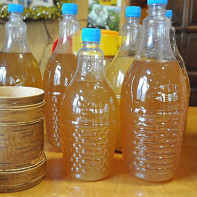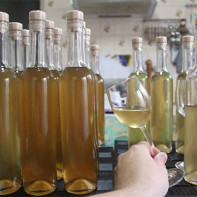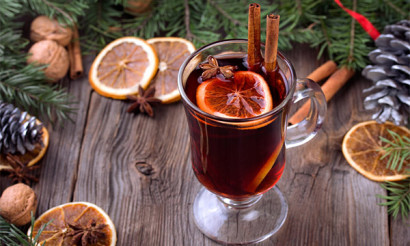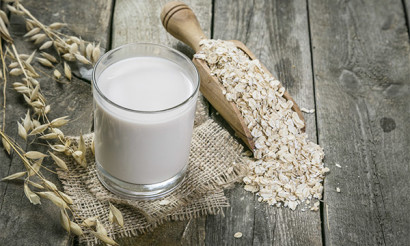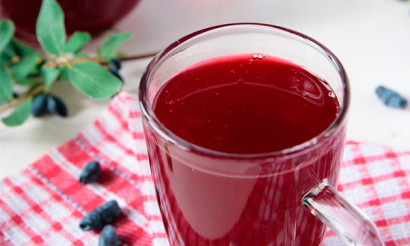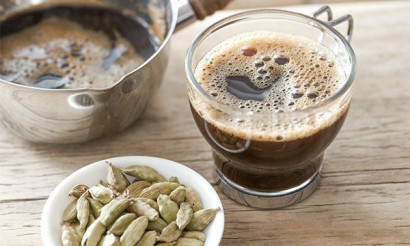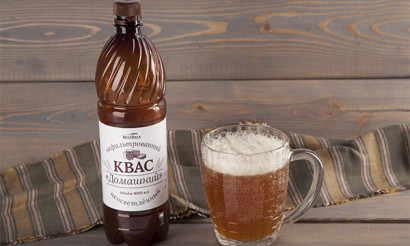Mead: benefits and harms to the body
In the old days, long before the advent of vodka and other spirits, intoxicants from honey were common in Russia. And although the word "mead" itself appeared relatively recently, the traditions of the preparation of this drink are rooted in antiquity.
- What is mead
- Kinds
- Composition and calorie content
- Useful properties of mead
- For women
- For men
- During pregnancy
- When breastfeeding
- For kids
- With gout
- With a cold
- Mead in traditional medicine
- Harm and contraindications
- How to properly store mead
- How to drink mead
- How to make mead: recipes
- What you need to know about cooking mead
- Spiced mead: two recipe options
- Mead without boiling
- Mead monastery
- Cherry mead
- Interesting facts about mead
What is mead
This drink is considered the progenitor of wine, but it is not made from grapes. At the heart of mead, as you might guess from the name, honey, as a result of fermentation of which a soft low-alcoholic drink with a delicate aroma is born.
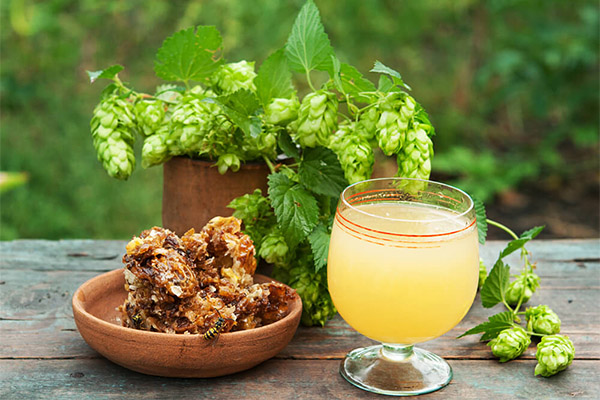
Of course, according to old recipes, it is rarely prepared today. More common are those that were created in Veliky Novgorod more than 200 years ago and have since been adapted to modern conditions. However, this applies to home-made mead. It is also produced industrially according to the approved recipe and specifications. There are solid honey enterprises not only in Novgorod, Suzdal or Kolomna, but also in Altai, as well as in some other regions where there is high-quality raw material for this drink.
Kinds
There are many varieties of this drink. The main differences between them are the method of preparation. For example:
- Depending on the strength and exposure time. This is a young mead (2 weeks of aging) and ordinary (in the old days it was kept for three years, now, especially in industrial conditions, it takes much less time - about a month). It is also strong and set mead (that is, cooked without boiling).
- Depending on the additional addition of alcohol. Allocate even non-alcoholic mead, in which there is no alcohol at all.
- Depending on additional fillers. Mead can be berry, it is also prepared with the addition of juniper, rosehip or a standard set of spices for such a drink - cinnamon, ginger, cloves, etc. In the latter case, it is called spicy.
In former times, honey was considered the most valuable. For its fermentation, not only hops were used, but also various acidic berries - lingonberries, cherries, currants. The product was supposed to ferment at a temperature of about + 5 ° C. Such requirements exist today. But, of course, no one pours the drink several times from one oak container into another and does not bury it in the ground for 40 years. By the way, even in those days it was too long and expensive process.
As a result, a hot fermentation technology appeared, that is, honey began to be cooked, various fruits, herbs, spices added to it, and yeast began to be used as a starter culture. Of course, connoisseurs assured that the put honey has a more refined and rich taste, but boiled was cheaper, and it cooked much faster. As for the rest of the options described above, there are a lot of recipes, it all depends solely on imagination and willingness to experiment.
So each owner can choose the mead recipe that he likes best, or prepare several options - for example, classic young and spicy.
Composition and calorie content
Despite all its beneficial properties, mead is a fairly high-calorie drink that should be used with caution. The fact is that the energy value of the drink is almost 94 kcal per 100 ml, and at the same time, carbohydrates occupy most of its composition (after water, of course) - 13%.That is, we can assume that a person drinks sweets in liquid form, albeit useful ones. So if the blood sugar level is elevated, then you will have to refuse a mead.
As for the chemical composition, it includes:
- Ascorbic acid - positively affects the state of blood vessels.
- Tocopherol - is an antioxidant, has anti-inflammatory properties, and is also necessary for women to improve the function of the reproductive system.
- B vitamins (thiamine, niacin, riboflavin and others) - ensure the normal functioning of the nervous system, are also responsible for metabolic processes.
- Biotin, which plays an important role in the digestive and metabolic processes, improves the condition of hair and nails.
- Beta-carotene is another antioxidant that has a positive effect on vision.
Also, the mead contains a large number of minerals that are initially present in the raw materials used for its production. For example, it is iron necessary for hemopoiesis, which play a crucial role in ensuring the health of the heart muscle potassium and magnesium. It even contains rare elements such as vanadium, rubidium and molybdenum.
The substances listed above are present in any mead, regardless of the prescription. But in each case, the chemical composition will be unique, as other ingredients can be added to the drink - for example, berry juice, lemon juice, spices, hop cones, yeast. And they also contain many essential oils, vitamins and minerals.
Useful properties of mead
This drink has many beneficial properties. Quality mead made from natural ingredients:

- Cleanses the body of toxins.
- Helps strengthen the immune system.
- It is an effective prophylactic against cardiovascular pathologies.
- It has anti-inflammatory and antibacterial properties.
- It has a mild sedative (calming) effect, is considered a good remedy for stress and its negative consequences, as well as for neurosis.
- It improves metabolic processes, which helps to get rid of extra pounds.
- Relieves puffiness and improves blood circulation.
- Eliminates muscle pain.
- It has an antipyretic effect.
Mead in a small amount is prescribed in the postoperative period in order to tone the body and restore strength. It is believed that its regular use increases physical stamina and the body's ability to better tolerate high mental and psycho-emotional stress.
For women
Women are recommended to drink mead. It improves blood circulation and has an anti-inflammatory effect - this allows it to be used to treat diseases of the pelvic organs. In addition, mead strengthens the walls of the uterus, or rather, its smooth muscles, which further helps to make a healthy baby.
For men
In the old days, newlyweds were given a mead for a wedding. There is a version that is why the month is called honey. The bride and groom consumed a good drink, aged for several years, which guaranteed healthy offspring. Modern doctors believe that the use of mead has a greater effect on the reproductive health of men. The fact is that the small muscle located at the very base of the penis is responsible for this. It plays the role of a valve that regulates the flow and outflow of blood filling the cavernous bodies. Muscle performance largely depends on those trace elements that the mead contains. First of all, it is zinc, which also has an anti-inflammatory effect.
Mead normalizes blood circulation, which, like the properties described above, allows you to eliminate erectile dysfunction and give strength.
During pregnancy
Doctors have no consensus on the benefits of mead during pregnancy. The only thing they agree on is that the future mothers should not drink the alcoholic version of the drink, this can negatively affect the fetal health.
As for the non-alcoholic option, it can be useful, because the mead contains many vitamins and minerals.It helps to restore the mineral-salt balance and normalize digestion (and after pregnancy, constipation often occurs, including those caused by intestinal motility disorders). But honey and herbs can provoke an allergic reaction, so drink the drink with caution.
When breastfeeding
As you know, beekeeping products have a positive effect on lactation. But you should not even use non-alcoholic mead during this period - it can cause an allergy in a child.
For kids
In the classic version, mead is an alcoholic drink, even a small fortress of 5–7 ° С. It is clear that children should not be given it, even in the treatment of colds. But the non-alcoholic option for children can be given both for therapeutic and prophylactic purposes, but not more than a glass a day and provided that the child has no allergies.
With gout
On the one hand, mead with gout can be useful in that it quickly removes salts from the body. On the other hand, like other drinks with a high sugar content, it can adversely affect the condition of the kidneys. So with gout, it can only be used if the potential benefit exceeds the possible risks.
With a cold
This product will be very useful for colds. After all, this disease itself is caused by a bacterial or viral infection. Mead has a diuretic effect and the ability to enhance sweating, and this helps to eliminate toxins, viruses and vital signs of pathogenic microbes from the body.
In addition, mead enhances pulmonary ventilation, so it is useful to drink it for diseases of the respiratory tract - for example, laryngitis, tracheitis, bronchitis and pneumonia.
Mead warms, but, in addition, it is drunk in order to disinfect the nasopharynx with tonsillitis or tonsillitis.
One of the features of this drink is that it can be used both by itself and in combination with various natural components containing healthy oils. For example, it can be rose petals (but you need to take varieties that contain more essential oil), dried thyme or even horseradish. In combination with such components, mead is an excellent remedy for a cold.
On the Web, you can find recipes in which mead is used to rinse the nose with a cold. But just this is better not to do - so you can burn the mucous membrane.
Mead in traditional medicine
Mead in folk medicine is used for other diseases. For example, for pathologies of the cardiovascular system, it is recommended to use it in combination with dry red wine (70 g of mead and 30 g of wine are drunk once a day before dinner).
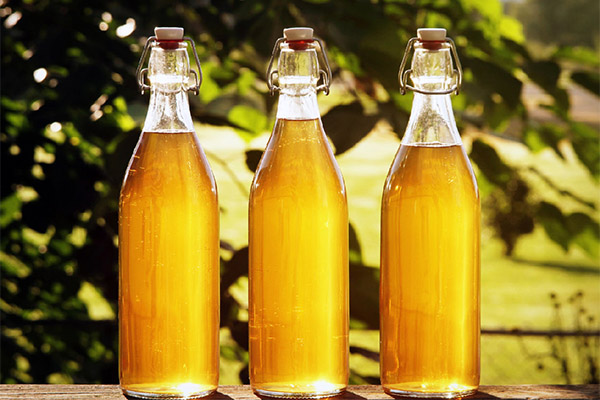
A glass of non-alcoholic mead in which fresh mint leaves are added and slightly warmed plays the role of a sedative. It acts soothingly and normalizes sleep.
For some liver diseases, they drink mead diluted with water (70 g of an alcoholic drink without additives in 2/3 glasses of water). This is done once a day during any of the main meals.
Against spring vitamin deficiency and loss of strength, a mixture of mead and cahors taken in equal proportions (50 g each) helps.
In addition, a glass of strong mead mixed in equal parts with red wine helps fight intestinal infections. Some experts even consider this a good remedy for both constipation and diarrhea, as it helps to normalize the digestion process.
Harm and contraindications
Despite the fact that mead is a drink on a natural basis, it has a number of contraindications. It can not be used:
- with diabetes - due to the high sugar content;
- pregnancy and lactation - due to the impact on the health of the baby;
- the presence of allergic reactions to honey and other components;
- diseases of the liver and kidneys.
You should also not get carried away with mead for those who suffer from chronic gastritis and pancreatitis (and in the acute form of the disease, this drink is completely contraindicated).
Of course, in each case it is worth consulting a doctor so that there are no unpleasant surprises in the future.
How to properly store mead
One of the features of mead is that it requires a special approach in terms of storage. So, the material of the container in which it will be kept plays an important role. Metal is not considered the best choice, since it can enter into a chemical reaction with the substances contained in this drink. Therefore, it is definitely not worth keeping the mead in a metal can.
In ancient times, oak barrels were used for this. Of course, it is this type of wood that is considered ideal for most low-alcohol drinks, since the substances contained in it participate in the creation of their unique taste and aroma. However, oak barrels are expensive, they are rarely used in home honey production. There is a cheaper analogue of them - these are linden barrels. It is believed that this breed can even accelerate the fermentation process.
However, if the mead will be stored in an ordinary city apartment, then it is worth choosing glass bottles. This is generally a more practical option for home honey production, especially if there is not too much finished product. Glass does not react with mead. This is basically an inert material. But it is better to choose dark glass, especially if the drink is stored in the refrigerator.
It is important that sun rays do not fall on the mead. Firstly, because ultraviolet rays directly affect the composition of the drink, destroying beneficial substances. Secondly, with prolonged exposure, the sun heats the bottle, and this is undesirable.
Temperature storage is important for storing mead. As for other low-alcohol drinks, + 5 ... 10 ° С are considered optimal conditions. They can be provided if you keep mead in the basement or in the refrigerator.
For short-term storage and transportation of products, plastic containers are also suitable. But you can’t keep a drink in it for a long time - it will deteriorate.
When closed, properly cooked mead can be stored for years. Moreover, with age, it can even get better.
How to drink mead
Many people think that it is better to drink mead on an empty stomach. Of course, such a low-alcohol drink can play the role of an aperitif, that is, it is needed in order to improve appetite, stimulate digestion and at the same time accelerate metabolism.
It is better to drink mead chilled. This option is especially good for the summer heat, only you need to open such a bottle carefully, without shaking. At the same time, it can be warmed up a little in winter, but not too much, because it is impossible to boil a drink - this will destroy the nutrients it contains.
Although mead is not a strong drink, it is better to drink it in small sips, without rushing, from small glasses. Snacking her is not accepted.
How to make mead: recipes
It is quite difficult to make a mead at home, especially if you use old technologies that require a basement and a glacier with a constant temperature regime, oak barrels, etc.
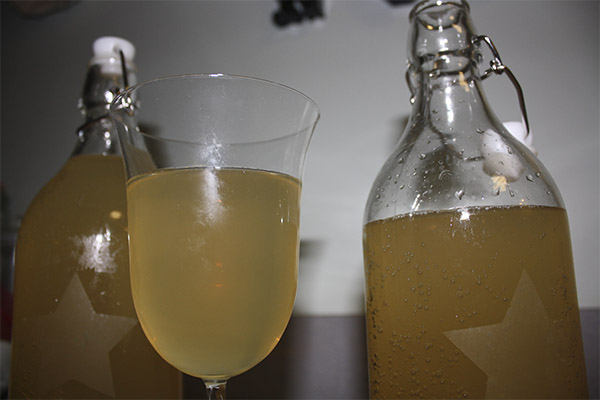
What you need to know about cooking mead
Properly prepared mead should be practically transparent, without sediment. Its color depends on the shade of honey, that is, it can vary from pale yellow to amber brown, resembling a sweet soda in appearance. In general, it is very important to choose the right raw materials for such a drink. Honey for him must certainly be natural and aromatic. Moreover, experienced mead advise you to buy light varieties of this product (white is especially appreciated).But in fact, this does not affect the taste, and this choice is largely due to tradition.
If desired, you can choose dark varieties - for example, buckwheat honey. It has a pronounced aroma, with a slight bitterness. And at the same time it is more useful than light varieties, since it contains more iron.
The quality of honey must be given special attention. For example, liquid honey in the fall is quite acceptable. But in the spring this is evidence of the seller’s dishonesty. For example, some melt honey in a water bath, which makes it more attractive, but partially deprives of its beneficial properties. Not to mention the fact that such a product may be a substitute.
It’s not enough to choose a honey variety, you still need to take care of the equipment. Since the fermentation process is assumed here, a gas outlet will be needed. To do this, a tight cap is put on the glass bottle so that a tight closure can be ensured. But then a hole is made in the lid through which a thin hose is passed. One end is left in a container so that it is above the surface of the drink, and the other is lowered into a cup of water. Many owners prefer a simpler option - instead of using a cap, they use a tight latex or rubber glove that fits well to the neck. A hole is made in this glove.
In this case, check the fermentation process as follows: you need to light a match and bring gloves to the hole. If the fire does not flare up more strongly, then the fermentation process as a whole is completed, since alcohol fumes do not rise from the drink. But this is a rather dangerous way, you need to be careful with it.
Spiced mead: two recipe options
Fans of adding spices to alcoholic beverages can use the following recipe: for 2.5-3 liters of water, about 1 kg of flower honey. This mixture is brought to a boil, while stirring constantly. After that they add literally a pinch of different spices - allspice, ground cinnamon, cardamom, dried and chopped ginger, zest of one lemon, bring to a boil. If you can find hops, you can add 5 g of this ingredient.
When boiling, a foam forms on the surface, which is regularly removed. After boiling, the broth is filtered, cooled, 100 g of yeast is added to it (it is better to take brewery, but ordinary ones will do). The mead is placed in a warm place so that the fermentation process begins.
The ideal option is the presence of a tank with a water seal. You can buy a ready-made one in stores, but there is also a simpler option - a rubber glove worn over the neck. After a few days, the finished mead is poured into glass containers and left to ripen in a cool place for another 2 weeks.
There is another recipe for spicy mead. 0.75 kg of honey, a total of 10 g of dried yeast, a few cloves, 1 teaspoon of ground nutmeg, a pinch of cinnamon, 1 egg white are taken on the same 3 liters of water.
Honey and protein are mixed until a homogeneous mass is formed, then poured with water, mixed again and put on fire. The mixture is brought to a boil, stirring regularly, then reduce the heat and cook for 10 minutes. After that, add spices, mix again and leave on fire for an hour, without closing the lid. During this time, the mixture should acquire transparency, uniformity and boil up to half of the original volume.
Then the drink is removed from the heat, carefully filtered, poured into a glass bottle and only after that add yeast.
But there are two important points. When cooking honey, a foam forms. It must be removed. Before adding yeast to this mixture, the drink needs to be cooled. The fact is that yeast contains bacterial cultures that die at high temperature.
All this is mixed again, covered with folded gauze for a day, a lid or a makeshift glove lock and left to roam in a warm and dark place for 2 weeks.
Mead without boiling
In order to prepare this drink, 5 g of water will need 400 g of flower honey, 3 tbsp. tablespoons of good raisins, 2-3 fresh lemons, 1 teaspoon of yeast.
Raisins are washed, lemons are also washed and cut into slices, not forgetting to remove the seeds. All this is mixed with honey in a large saucepan. Water is boiled in a separate container, then it is slightly cooled and the prepared raw material is poured. It is constantly mixed until the honey is completely dissolved. When the composition resembles fresh milk in temperature, yeast diluted in water is added to it. This mixture is left somewhere in a warm place without light for a day. You can understand that the fermentation process has begun, because the pieces of lemon and raisins will begin to float up.
When the process starts, it will be possible to bottle the mead, after passing it through cheesecloth. These bottles are sealed tightly and stored, as described above, in a dark and cool place. It is believed that after 2 weeks it will be ready for use - this is the young mead described above.
Mead monastery
If you manage to get somewhere dried hop cones, you can prepare the monastery mead. 3 kg of water take 1 kg of honey and mix thoroughly. Then put the drink on a slow fire and gradually boil for 3 hours. After that, take 2 teaspoons of dry chopped hops, wrap in gauze, making it like a bag, cook for another 1 hour. After this, the mead is removed from the fire, passed through the filter and poured into the prepared container (only filling it not completely, but by 4/5 of the volume). Then the drink is placed in a dark and warm place for another 1-2 days to stimulate fermentation. If you put a glove on the container and make a hole, hiss will be heard - this is the process of fermentation. When the hissing stops, another 100 ml of unsweetened but strong black tea is poured into the drink and passed through gauze folded in 3 layers. The finished mead is bottled and corked. It is recommended to insist it in a cool place for 1 year.
Cherry mead
This drink is made without yeast. Take 4-5 kg of sour cherry and 2 kg of honey per 1 liter of water. First, honey syrup is boiled, diluting the raw material with water and transferring it first to an enameled pan. Cherry is poured into a glass container with a narrow neck (seeds are removed beforehand). Cool the honey syrup and pour cherry on it. The acid contained in the berries starts the fermentation process - it will last 3 days, after which the drink is filtered, poured into bottles, closed with lids or corks and put in a cool place.
Cranberry mead is made in a similar way, only more water is added, and fewer berries. If you do not insist it for 3 days, and drink it almost immediately after cooling, then fermentation will not occur, and you get a soft drink.
Interesting facts about mead

- In the old days, the mead was kept exclusively for special occasions. And this is not surprising, because in those days the drink was prepared for a very long time. The so-called put honey was left in an oak barrel buried in the ground for 15–40 years (and some sources indicate that it is up to 50). Hopped honey was prepared faster, because in such cases hops were added to it, but it still took at least 3 years. There was also the so-called boiled honey - it was prepared like beer - first the mixture was brought to a boil, then leaven was added - for example, it could be black bread.
- Mead was prepared in barrels. And the expression "fly in the ointment" is just from those distant times. For the production of wooden containers in that era used black resin. In high-quality barrels, the boards are very tightly fitted to each other.But in poorly made containers through the gap in the boards a little resin could get inside - and even a microscopic amount of this liquid with a pungent taste was enough to spoil the entire volume of the drink. And this was revealed after many years of maturation.
- The expensive set honey was gradually replaced by other drinks. The fact that the state and the church monopolized production also played a role here. Well, then vodka appeared and overshadowed the less strong drinks in the harsh Russian climate.
«Important: all information on the site is provided exclusively in fact-finding purposes. Before applying any recommendations, consult with a profile specialist. Neither the editors nor the authors are liable for any possible harm caused materials. "


